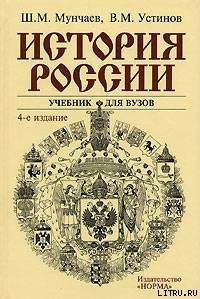Этнопсихология - Стефаненко Татьяна Гавриловна (книги бесплатно .txt) 📗
Rohner R. P. The warmth dimension: Foundations of parental acceptance- rejection theory. Bewerly Hills (Cal.), 1986.
Rotheram M. J., Phinney J. S. Introduction: Definitions and perspectives in the study of children's ethnic socialization // Children's ethnic socialization: Pluralism and development. Newbury Park (Cal.), 1987. P. 10-28.
Rotheram-Borus M. J. Biculturalism among adolescents // Ethnic identity: Formation and transmission among Hispanics and other minorities. Albany, 1993. P. 81-102.
Schwartz S. H. Individualism-collectivism: Critique and proposed refinements // J. of Cross-Cultural Psychology. 1990. Vol. 21. P. 139-157.
Schwartz S., Bardi A. Value hierarchies across cultures: Taking a similarities perspective//!, of Cross-Cultural Psychology. 2001. Vol. 32. P. 268-290.
Segall M. H., Campbell D. T., Hersokovits M. J. The influence of culture on visual perception. Indianapolis, 1966.
Semin G. R., ZwierS. M. Social cognition // Handbook of cross-cultural psychology. Vol. 3: Social behavior and applications. Boston, 1997. P. 51-75.
Shweder R. A. Thinking through cultures: expeditions in cultural psychology. Cambridge (Mass.), 1991.
Smith P. B., Schwartz S. H. Values // Handbook of cross-cultural psychology. Vol. 3: Social behavior and applications. Boston, 1997. P. 77-118.
Smolicz J. J. Tradition, core values and intercultural development: Plural societies // Ethnic and Racial Studies. 1988. Vol. 11. P. 390-405.
Stangor C., Lange J. E. Mental representations of social groups: understanding stereotypes and stereotyping emotions as determinants of intergroup attitudes // Advances in experimental social psychology. Vol. 26. San Diego (Cal.), 1994. P. 357-416.
Stephan W. G., Abalakina-Paap M. Russia and West: Intercultural relations // Handbook of intercultural training. Thousand Oaks (Cal.), 1996. P. 366-382.
Stephan W. G., Ageev V. S., Stephan C. W., Abalakina M., Stefanenko T., Coates-Shrider L. Measuring stereotypes: A comparison of methods using Russian and American samples // Social Psychology Quarterly. 1993. Vol. 56. P. 54—64.
Stephan W. G., Stephan C. W. Intergroup relations. Madison, 1996.
Stroebe W., Lenkert A., Jonas K. Familiarity may breed contempt: The impact of student exchange on national stereotypes and attitudes // The social psychology of intergroup conflict: Theory, research and application. Berlin, 1988. P. 167-187.
Sussman N. M., Rosenfeld H. M. Influence of culture, language, and sex on conversational distance //!. of Personality and Social Psychology. 1982. Vol. 42. P. 66-74.
Tajfel H. Human groups and social categories: Studies in social psychology. Cambridge, 1981a.
Tajfel H. Social stereotypes and social groups // Intergroup behaviour. Oxford, 1981b. P. 144-167.
Tajfel H., Flament C., Billig M. G., Bundy R. F. Social categorization and intergroup behaviour// European!, of Social Psychology. 1971. Vol. 1. P. 149-177.
Tajfel H., Turner J. C. The social identity theory of intergroup behavior // Psychology of intergroup relations. Chicago, 1986. P. 7-24.
Tanaka-Matsumi J., Draguns J. G. Culture and psychopathology // Handbook of cross-cultural psychology. Vol. 3: Social behavior and applications. Boston, 1997. P. 449-491.
Taylor D. M., Jaggi V. Ethnocentrism and causal attribution in a South Indian context//!, of Cross-Cultural Psychology. 1974. Vol. 5. P. 162-171.
Taylor D. M., Moghaddam F. M.Theories of intergroup relations. International social psychological perspectives. N. Y., 1987.
Ting-Toomey S., Gao G., Trubisky P., YangZ., Kim H., Lin S. L., Nishida T. Culture, face maintenance and styles of handling interpersonal conflict: A study in five cultures // International J. of Conflict Management. 1991. Vol. 2. P. 275— 296.
Tinsley C. H. How negotiators get to yes: predicting the constellation of strategies used across cultures to negotiate conflict // J. of Applied Psychology. 2001. Vol. 86. P. 583-593.
Tinsley C., Curhan J., Kwak R.S. Adopting a dual lens approach for overcoming the dilemma of difference international business negotiations // International Negotiations. 1999. Vol. 4. P. 1-18.
Triandis H. C. Culture and social behavior. N. Y., 1994.
Triandis H. C. Cross-cultural psychology // Asian J. of Social Psychology. 1999. Vol. 2. P. 127-143.
Tronick E.Z, Morelli G. A., hey P. K. The Efe forager infant and toddlers pattern of social relationships: Multiple and simultaneous // Developmental Psychology. 1992. Vol. 28. P. 568-577.
Vaughan G. M.A social psychological model of ethnic identity development // Children's ethnic socialization: Pluralism and development. Newbury Park (Cal.), 1987. P. 73-91.
Ward C., Kennedy A. Acculturation strategies, psychological adjustment and socio-cultural competence during cross-cultural transitions // International J. of Intercultural Relations. 1994. Vol. 18. P. 329-343.
Weinreich P. The operationalization of ethnic identity // Ethnic psychology: Research and practice with immigrants, refugees, native peoples, ethnic groups and sojourners. Amsterdam, 1988. P. 149-168.
Werner O., CampbellD. T. Translation, working through interpreters and the problem of decentering // A handbook of method in cultural anthropology. N. Y., 1970. P. 398-422.
Westwood R.I., Tang S.F.Y., Kirkbride P.S. Chinese conflict behavior: Cultural antecedents and behavioral consequences // Organizational Development J. 1992. Vol. 10. P. 13-19.
Whiting B. B., Whiting J. W. Children of six cultures. A psycho-cultural analysis / In collaboration with R. Longabaugh. Cambridge (Mass.), 1975.
Zavalloni M. Ego-ecology: The study of the interaction between social and personal identities // Identity: Personal and socio-cultural. Stockholm, 1983. P. 205–231.
[1] В дальнейшем мы более подробно проанализируем понятие «этнос», а сейчас отметим, что это заимствованное из древнегреческого языка слово используется в значении «народ», «национальная общность».
[2] Не следует также забывать, что этническая идентичность является наиболее доступной формой социальной идентичности именно у нас в стране: самоотождествиться с «народом» для большинства граждан не составляет труда, так как советская паспортная система превратила «национальность» в расовую категорию, определяемую по «крови» (происхождению родителей), тогда как обычно это понятие означает гражданство.
[3] Для лучшего осмысления того, что такое стереотип поведения, Гумилев приводит пример типичного поведения представителей разных народов в трамвае, куда вошел буйный пьяный: русский пожалеет пьяного и уступит ему место, латыш позовет милиционера, татарин отойдет в сторону, а кавказец может вступить в драку, если пьяный начнет к нему приставать.
[4] См. раздел 7.3.
[5] В США эту науку чаще всего называют просто антропологией, а специалиста и данной области — антропологом, но мы будем использовать термины «этнолог» или «культурантрополог», тем более что в русском языке термином «антропология» обычно обозначается физическая антропология.
[6] Это осознавали и «прародители» этнопсихологии. Так, древнегреческий историк Геродот, стремясь узнать причину войн между греками и варварами, побывал во многих странах и приобрел знания об образе жизни народов, которые в них обитали [Геродот, 1972]. О Геродоте и других мыслителях, в трудах которых имеются крупицы этнопсихологических знаний, более подробно мы поговорим в следующей главе.
[7] Запомним эти качества, со многими из них мы встретимся и в других «портретах» славянских народов, в частности народа русского.



